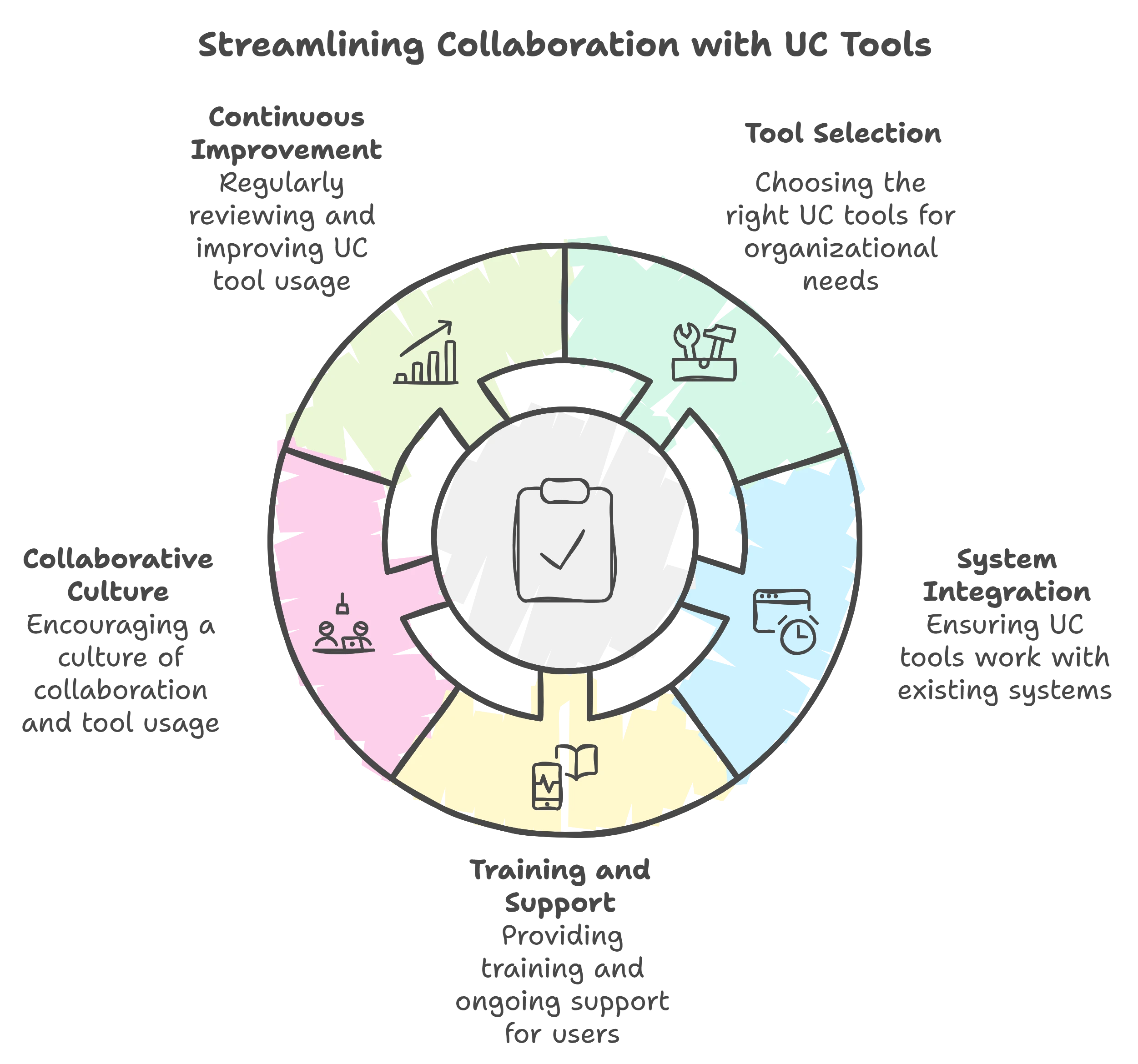
In the fast-paced modern business environment, effective collaboration is essential for success. Unified Communications (UC) tools are a powerful solution designed to enhance teamwork, streamline communication, and increase productivity. Read on for a comprehensive review of how UC tools can enhance collaboration.
Unified Communication integrates multiple tools—instant messaging, video conferencing, email, and voice calls—into one system, enabling communication regardless of location or device. The main components of UC include:

Before implementing UC tools, assess your organization's specific communication requirements. Consider factors such as:
Involving the team in this process ensures that chosen tools will address their needs effectively.
Choose UC solutions that align with your organization's needs. Some options include:
Consider scalability, compatibility with existing systems, and user-friendliness when reviewing tools.
UC tools should easily integrate with existing applications, such as CRM systems or project management software. This integration supports workflow efficiency and facilitates seamless data sharing between platforms.
| Integration Type | Benefits | Examples |
|---|---|---|
| CRM Integration | Customer data accessible during communications | Salesforce, HubSpot, Microsoft Dynamics |
| Project Management | Task updates and discussions in one place | Asana, Trello, Monday.com |
| Calendar Integration | Simplified scheduling and availability | Google Calendar, Outlook |
| Document Management | Seamless file access and sharing | SharePoint, Google Drive, Dropbox |
Providing adequate training is essential for effective use. Some options include:
This approach fosters a learning culture and ensures optimal tool usage.
To maximize UC tool usage, cultivate a culture that encourages collaboration:
Rewarding collaboration as part of the organizational culture boosts participation and efficiency.
"The most successful unified communication implementations are those where the tools become so embedded in daily workflows that employees cannot imagine working without them."
Continuously review your UC tools and seek user feedback to identify pain points and improvement areas. Periodic reviews keep your communication strategy dynamic, allowing it to adapt to team structure or technology changes.
Implementing UC tools can lead to significant improvements in workplace collaboration, including:
| Challenge | Solution |
|---|---|
| User Resistance | Comprehensive training, highlight benefits, ensure user-friendly interfaces |
| Technical Issues | Robust IT support, regular maintenance, reliable providers |
| Security Concerns | Implement strong encryption, access controls, regular security audits |
| Integration Complexity | Choose tools with open APIs, phased implementation, expert consultation |
Unified Communication tools are essential for modern organizations seeking to simplify collaboration and communication processes. By selecting the right tools, training employees, fostering a collaborative culture, and continually reviewing tool performance, organizations can enhance operational efficiency and team dynamics. Embracing these technologies not only boosts productivity but also prepares organizations to navigate the growing digital landscape.
What are unified communication tools?
Unified communication tools integrate multiple communication channels—such as instant messaging, video conferencing, email, and voice calls—into a single platform to streamline collaboration and information sharing.
How do UC tools improve productivity?
UC tools improve productivity by reducing communication delays, centralizing information, enabling real-time collaboration, and minimizing context switching between different applications.
What are the key features to look for in UC tools?
Key features include real-time messaging, video conferencing capabilities, file sharing, screen sharing, mobile access, presence indicators, and integration with existing business applications.
How can organizations ensure successful UC tool adoption?
Organizations can ensure successful adoption through comprehensive training, continuous support, leadership example, clear communication about benefits, and involving users in the selection process.
Are UC tools suitable for all business sizes?
Yes, UC tools are available for businesses of all sizes. Many providers offer scalable solutions that can be tailored to the specific needs and budgets of small, medium, and large enterprises.
Your email address will not be published. Required fields are marked *
Loading questions...
